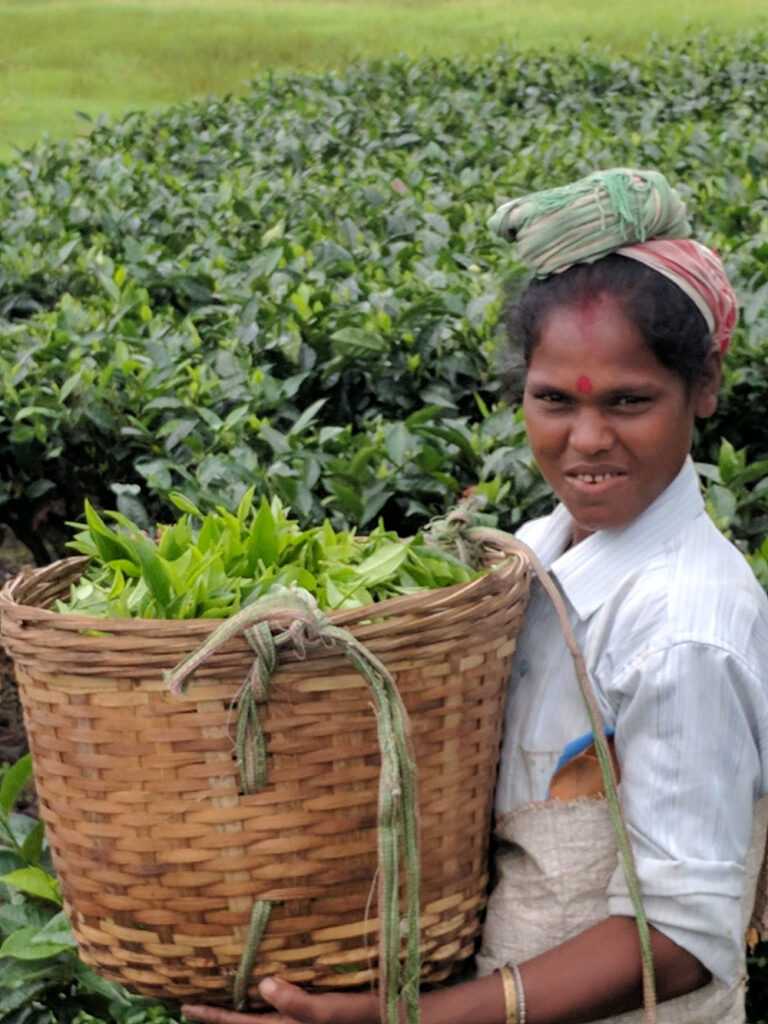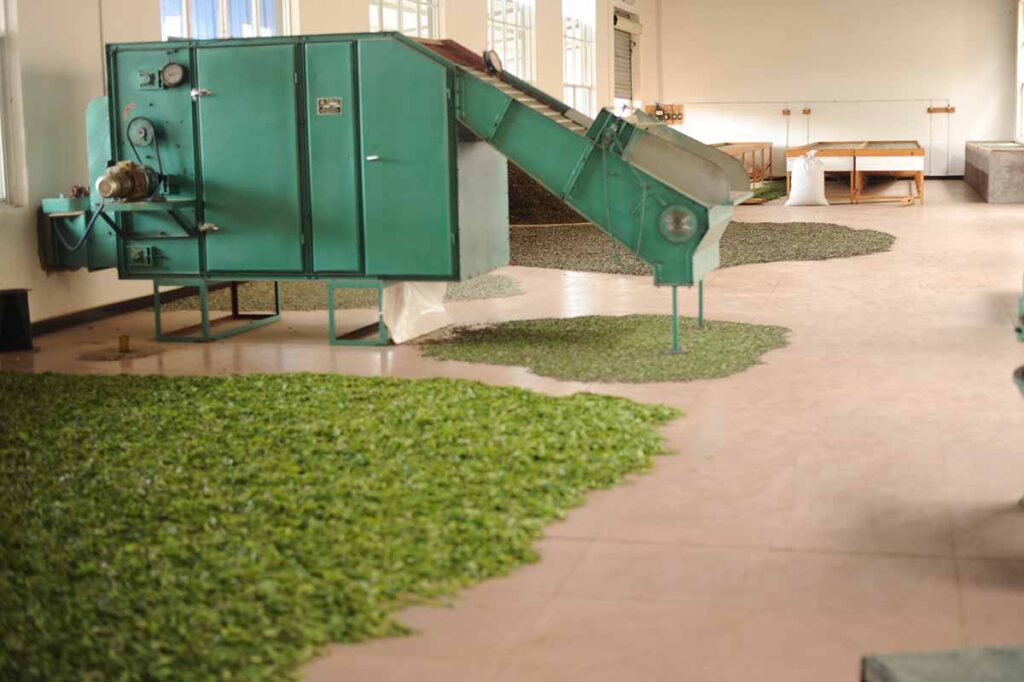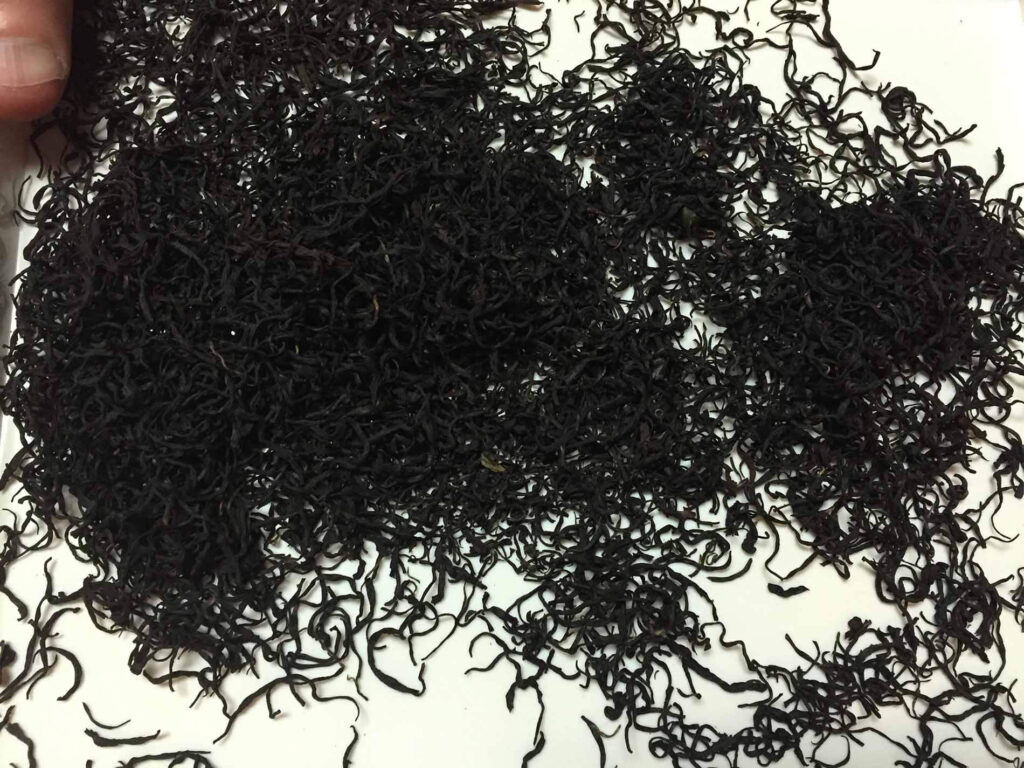What is black tea?
Black tea
Black tea is the most misunderstood of all tea categories. Like white, yellow, green, oolong, and puerh teas, black tea comes from the plant Camellia sinensis. Black tea contains just as many of the super-healthy polyphenols as the other categories. If the enzymes are not stopped immediately after harvesting, as they are with green tea, the cell walls of the leaves will break down, and the polyphenols in the tea will react with oxygen. This process is called polyphenol oxidase and is the same process that occurs when a cut apple changes color due to exposure to oxygen. We do not classify air-dried apples as unhealthy.
Black tea is the most oxidized of all categories. The enzymes polyphenol oxidase and peroxidase contribute to the development of the tea’s black color and aromatic flavor. The more the leaf is handled, the darker it becomes. Green tea can be vegetal or herbal with scents of freshly cut grass and notes of vegetables. Black tea is much more complex, with aromatic scents of fruits, flowers, spices, caramel, wood, and malt, accompanied by corresponding flavor notes and long lingering aftertastes that warm the body.
According to traditional Chinese medicine, black tea is best suited for those living in cold climates because it warms and nourishes the body. It stimulates digestion, dilates blood vessels, and strengthens the heart.
Eighty percent of all teas produced and sold worldwide are black tea. The processing methods can vary greatly from country to country or region to region. Black tea produced in China is called red tea (Hong cha), which can create some confusion in the West. The tea is named for the red color it has when brewed. The four fundamental processes for black teas are: withering, rolling, oxidizing, and drying.
All black tea goes through these four phases, but there are two different rolling methods: Orthodox and CTC.
Production of Orthodox Tea
Orthodox means traditionally processed. The tea is always hand-picked and often hand-processed by artisan producers known as tea masters. The tea comes in many different varieties, styles, and sizes. These teas are unique to China but can also be found in other countries such as India, Nepal, Sri Lanka, and Kenya, to name a few. Orthodox processing is reserved for the finer teas that grow high in the mountains and are harvested early in the spring. The hand-processed teas are sought after by tea enthusiasts and can be among the most expensive in the world.
The freshly picked green leaves are spread out on trays in a thin layer for up to 18 hours. Warm air can circulate between the leaves, making them soft and elastic so they can be rolled without breaking, while the moisture in the cell walls of the leaves is reduced.
It is the rolling process that breaks down the cell walls and releases the aromatic oils. For the very fine tea varieties, this process is still done by hand, but most use rolling machines. During the rolling process, the juice from the green leaves, which contains catechins and enzymes, is extracted. These substances react with oxygen and give the leaves a reddish-copper color. This process is called polyphenol oxidase and occurs because polyphenols react with oxygen. Catechins are transformed into thearubigins and theaflavins due to the oxidation process. This group of substances is known as polyphenols and is recognized for their healing effects on the body.
The oxidation process is a 100-year-old craft that requires expertise and experience to ensure that quality is prioritized.
After rolling, the leaves are again placed on trays in a thin layer to cool and complete the oxidation. The process can be short or long depending on the climate and humidity.
Finally, the leaves are dried in ovens at about 100-120°C. Today, most use automatic ovens with conveyor belts.
After drying, the leaves are meticulously sorted by size, sometimes into up to 14 different qualities. Sorting is often done by eye and by hand. To achieve the best results when brewing tea, the leaves must be of the same size. Very fine particles are sorted using sieves and are usually used for tea bags. The larger the leaves, the more can be demanded in price.
Approximately 100 kg of fresh green leaves yield 20-25 kg of processed black tea. This processing method has developed some of the most delicious and exclusive teas ever. There are countless black teas, many of which never leave Asia due to high demand and extremely high prices.
CTC Method
CTC, or cut-tear-curl, is a method used in many countries primarily to produce tea bags and cheaper commercial teas. These are used for blending, either as pure teas or as the well-known flavored teas in Denmark.
In 1950, to meet the increasing demand for tea bags, CTC machines were introduced for the production of commercial tea leaves. Today, tea is also harvested using machines, but the leaves are allowed to rest in the same way as orthodox tea. Instead of rolling the tea leaves by hand or on rolling machines, CTC machines are used, which with knives rotating in different directions, chop and tear the leaves apart into much smaller particles. The subsequent drying process is the same. The largest CTC producing countries are India, Kenya, Sri Lanka, Turkey, Indonesia, and Argentina.




